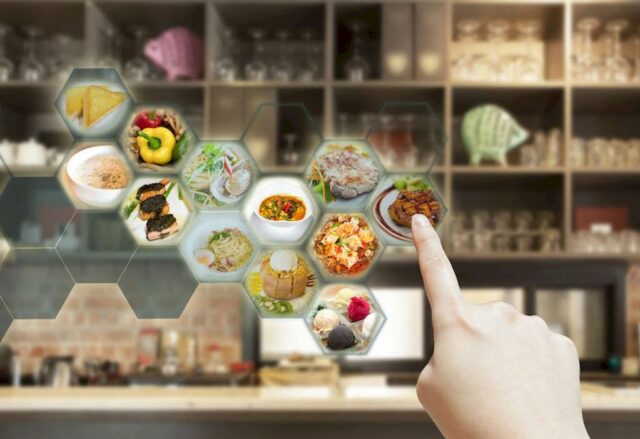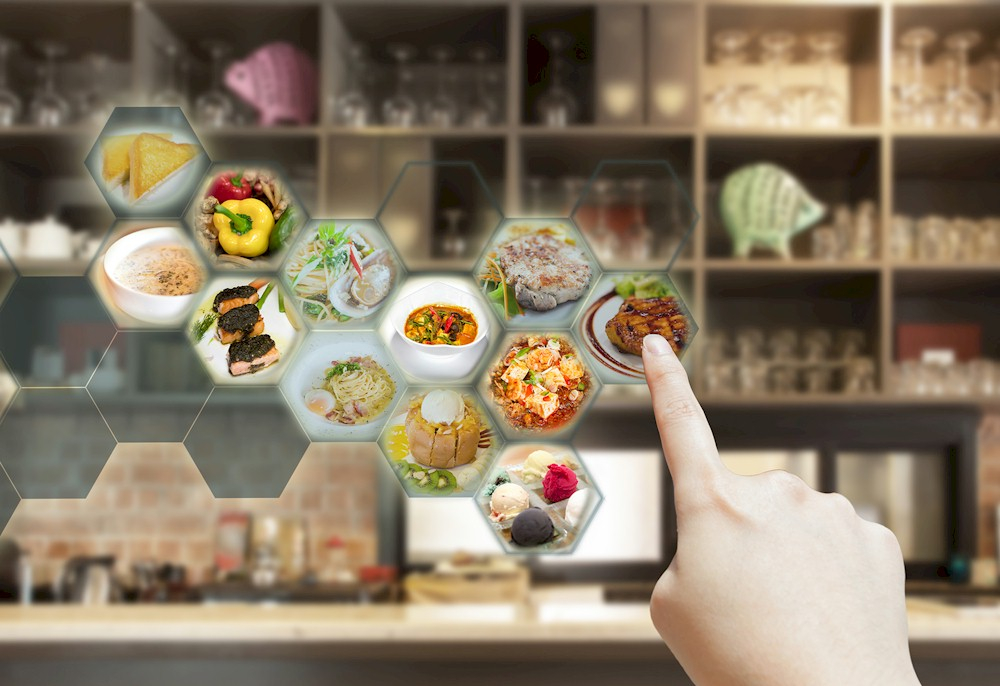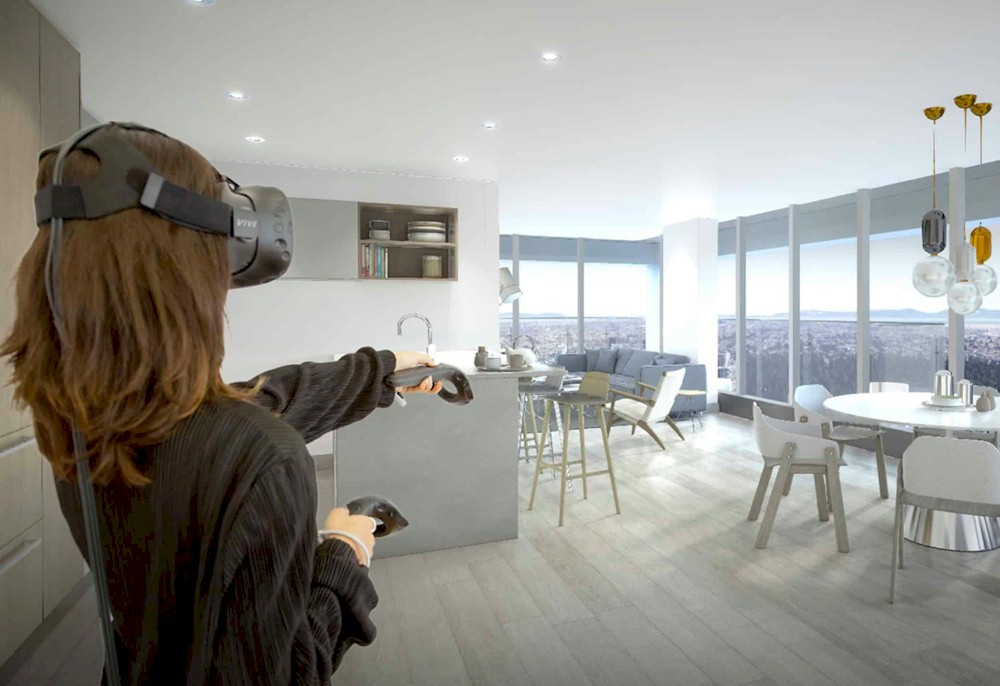The buzzword “Metaverse” has become viral globally when Facebook announced its new name “Meta” in late 2021. It is predicted that in the next few decades, the metaverse is the emerging disruptive technology that will revolutionize customers’ experience in the hospitality and marketing industry (Buhalis et al., 2023).
Thus, there exists great potential for hospitality businesses to transform customer experiences in the metaverse world.
The metaverse combines physical and virtual environments with the aid of Augmented Reality (AR) and Virtual Reality (VR) innovations to enhance customer experiences (Gursory et al., 2022). Despite the popularity of AR and VR, AR limits customers’ interactions within the devices, and VR blocks the real world (Egger & Neuburger, 2020). The advent of Mixed Reality (MR) solves the limitations of AR and VR by combining the merits of these two technologies into one, enabling users to interact in both the physical and the virtual worlds. MR glasses are made just like regular sunglasses. They can be connected to anyone’s cellphone, empowering users to experience a layer of the virtual world on top of the physical world.
Users can navigate through an immersive experience by using certain haptic gestures or their cell phones as a controller. Some examples of the currently available MR glasses are Nreal Air Glasses and Roki Air Glasses with friendly prices. Apple also announced that they will release Apple Glasses in preparation for the metaverse in the near future (Tech Division, 2022). It is quite likely that before we know it, everyone could carry a pair of MR glasses on the go.
This article discusses some potential uses of MR glasses in hospitality marketing. It hopes to inspire hospitality marketers to be prepared for the upcoming opportunities in the metaverse and create seamless interaction experiences for their consumers as a competitive and innovative marketing strategy.
What Does an MR Experience Look Like in the Future?
Imagine everyone could carry a pair of MR glasses in the near future. When you wake up in the morning, you put on your MR glasses. You brush your teeth and check your social media platforms in a virtual world simultaneously, using certain haptic gestures to manage the positioning of the virtual world presented within MR glasses in your physical world. Then, you can cook an awesome breakfast by watching YouTube videos and following along with the recipe. When you are finished eating and get prepared to drive to work, the GPS system is no longer on any device, rather within MR glasses. Google Maps is combined with the physical world to guide you to the destination. You would never miss a turn because the GPS arrows are overlaid on the physical road to guide you wherever you want to go, and you are less likely to be late than before when you got confused by the differences between the virtual map and the physical world.
When you get off work and go to a restaurant to enjoy a nice meal, you sit at a table and see on your MR glasses that a waiter named “Alex” is coming to serve you in 30 seconds. When Alex is introducing the restaurant specialty to you, a video pops up on your glasses showing the process of the chef making the meal and the final product for you to see. You tell Alex that you are interested in this specialty, then a 3D picture of the specialty is pulled up on your MR glasses, rotating and showing all the ingredients. The 3D picture also displays the health index information and nutritional information of the dish visually you to see.
You decide to select this meal and feel grateful for Alex’s professionalism. Then you can see on the glasses that your chef Jackie received your order and has begun preparing the meal for you. The estimated waiting time is 20 minutes. You suddenly realized that you forgot to tell Alex that you prefer less cheese in the meal, but you can send a quick message to Alex through the glasses. You receive instant feedback from Alex and Jackie that they received your note and will make the requested adjustment to the dish. Later, after you enjoyed the meal, you tipped Alex and Jackie by touching their avatars through the glasses and thanked them for their personalized and instant feedback by leaving a 5-star review on the restaurant’s website, all of which happened within the scope of a pair of MR glasses.
Crafting MR Consumer Experiences as a Marketing Strategy
The above scenarios are highly possible in the near future given the fast advancement of technology and the affordability of such portable MR glasses. Companies like Apple will most likely lead MR glasses fashion trends and marketing to advance Apple sales. So what can hospitality marketers do with MR glasses to pioneer this technology and harmonize it for hospitality marketing to gain competitive advantages and profits?
Hospitality marketers can create new and exciting consumer experiences with MR glasses. With the advance of 5G and MR experience design, hotel marketers can craft a smooth and seamless customer experience from the first step when a customer enters the hotel and provide real-time communications throughout his/her entire hotel stay. For example, hotel guests walking in a hotel lobby could instantly see virtual information on the MR glasses guiding them to visit the front desk, concierge services, spas, gyms, swimming pools, and other hotel amenities.
Those future-style rooms in Sci-fi movies now can come true in a hotel using MR glasses. Hotel marketers can design the rooms as simple as possible and include high-tech gadgets in a mixed reality environment. Hotel guests can customize the design of their room to their own specifications. Imagine you check into your room and you are able to set the MR glasses to make your room appear like a spaceship, a tiki hut on the beach, or an underwater aquarium. Movies fans can customize their room with different themes and different colors. Families can create personalized digital corners for all family members. Hotel guests might also be able to share their designs and experiences with the hotel on social media platforms. Every guest in the hotel can be a social media influencer to promote the hotel brand and its services instantly via MR glasses on their social media platforms. Hotels can also easily learn about their customers’ preferences and deliver customized and memorable services no matter which hotel location the customer is going to visit.
MR Experiences in Increasing Employee Marketing with Innovative Training Processes and On-the-job Experiences
MR glasses can also assist the HR department with recruiting and training process. In the interviewing process, recruiters will be able to let the interviewees react to a scenario in a real setting through MR glasses. Recruiters would be able to evaluate the immediate reactions of the interviewees and observe their personality traits. In the training department, HR trainers can introduce new trainees to MR glasses to familiarize themselves with the working environment and adapt to on-the-job training (OJT). Trainees can experience virtual guidance with game-style training experiences through the MR glasses during OJT.
For example, companies can initiate training campaigns using MR glasses. Trainees can earn performance points in the training game when they follow the virtual guidance from MR glasses. Through MR glasses, evaluators can provide instant performance feedback to recognize trainees’ excellent behaviors or encourage them to try harder by offering different levels of bonus points. Exemplary performance during training can be recorded by MR glasses and later shared with other trainees for learning and improvement. Trainees can also get performance bonus points when they re-watch training performance recordings. These points can be later redeemed for various rewards and/or recognized by the company.
This innovative gamified training program can increase employee marketing, especially among the Millennials and Gen Z population, because of the fun and more interactive experiences. In the long run, it also improves hospitality companies’ internal and external brand image from employees’ advocates of a satisfactory and exciting training experience. As such, there is potential for hoteliers to reduce turnover rate and increase recruitment rate by using MR glasses as their internal and external marketing tool.
Lastly, hospitality marketers should take advantage of MR glasses to improve communications between departments and/or between supervisors and employees. Employees can use some haptic gestures through the MR glasses to contact other employees or managers for help without leaving customers behind. Managers will be able to track the locations of each employee with instant communication. With employees’ consent, managers can also instantly monitor employees’ physical health indexes from the glasses, and provide instant contact to assist employees if they are overworked or overstressed. MR glasses would be able to bring employee communication to the next level.
Avoid Potential Drawbacks from MR Glasses Experience Design by Conducting Market Testing
While hospitality marketers are getting all pumped up by the huge benefits of using MR glasses to design memorable and personalized experiences and marketing initiatives, they should also consider potential drawbacks of the MR experience designs that may cause disruptive consumer experiences. For example, privacy issues may occur when displaying business ideas or advertising directly to customers and learning about customers’ preferences using MR glasses. Besides, it is unknown if consumers would like more interactive experiences through MR glasses or not.
From an employee perspective, employees might also feel more alert and uneasy if they know that they are being monitored by their managers using such glasses. There also exist ethical concerns with the information that MR glasses can collect from their employees. Hospitality academia and practitioners need to conduct market testing by collecting and analyzing customer and employee feedback about their perceptions and expectations of incorporating MR glasses in a service/work context. Hospitality businesses and technology companies should also work together to reevaluate and design MR experiences based on the feedback before commercialization.
Reprinted from the Hotel Business Review with permission from http://www.hotelexecutive.com/.








